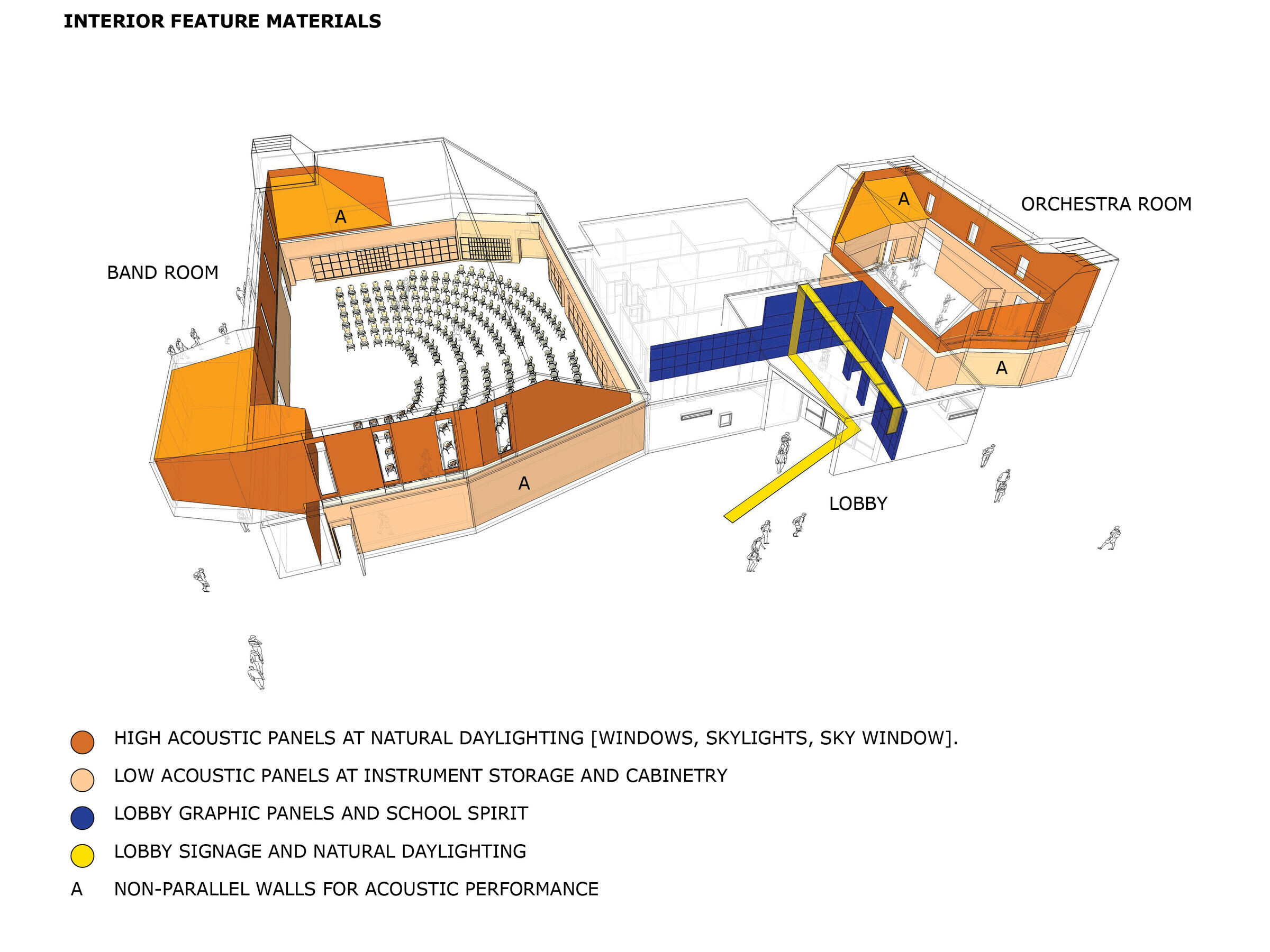A 21st CENTURY CLASSROOM MODEL
Traditional K-12 education buildings have created an entourage of partitioned structures promoting a single lecturer instruction style, and resulting in mostly isolated classrooms. Current teaching pedagogy has changed the architectural dynamic to reinforce information distribution, team collaboration, and ‘learn by doing.’ Teachers have assumed a role of ‘advisor’ or ‘guide’ to facilitate students’ efforts to research information and create their own knowledge base. A new classroom model should respond by facilitating creative, critical-thinking and communication skills enhanced by a group dynamic. Therefore, we believe the built environment must respond directly to the need for diversity and the collaborative spirit of education through design for flexibility, mobility, and dynamic learning.

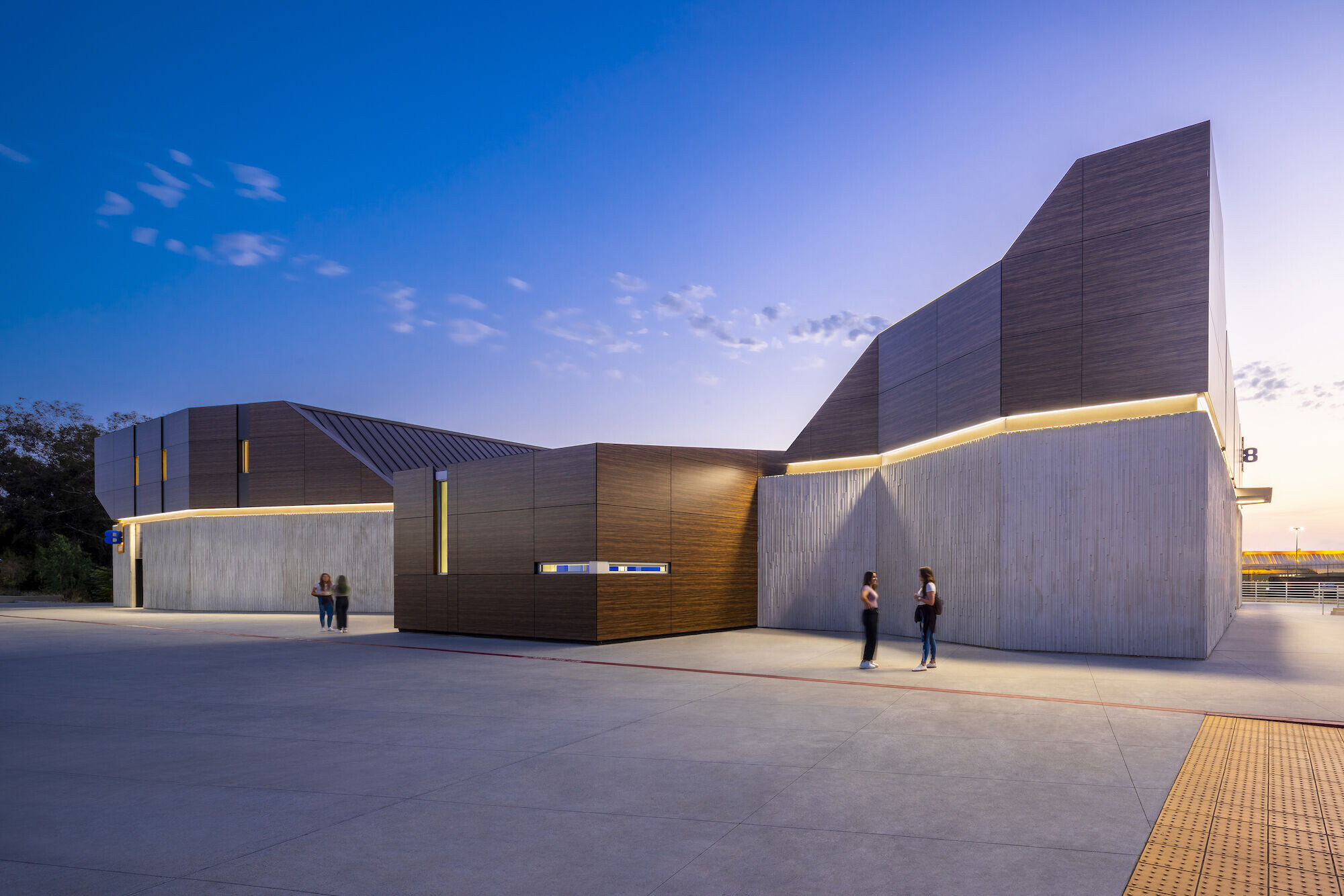
The future education building for Mira Mesa High School will reinforce this intent by providing a multi-environment, dynamic learning setting. This multi-setting structure extends beyond traditional indoor-outdoor design by utilizing three distinct variations of instructional spaces combined to create a diverse ‘collaborative nucleus.’ The design offers standardized interior classrooms for traditional needs, but then merges with shared patios and outdoor teaching clusters to promote physical and visual connections to create unique learning experiences. This model allows interior classrooms to be fluidly interactive with an adjacent classroom, patio and outdoor teaching cluster, or each can be partitioned into separate break-out type spaces.
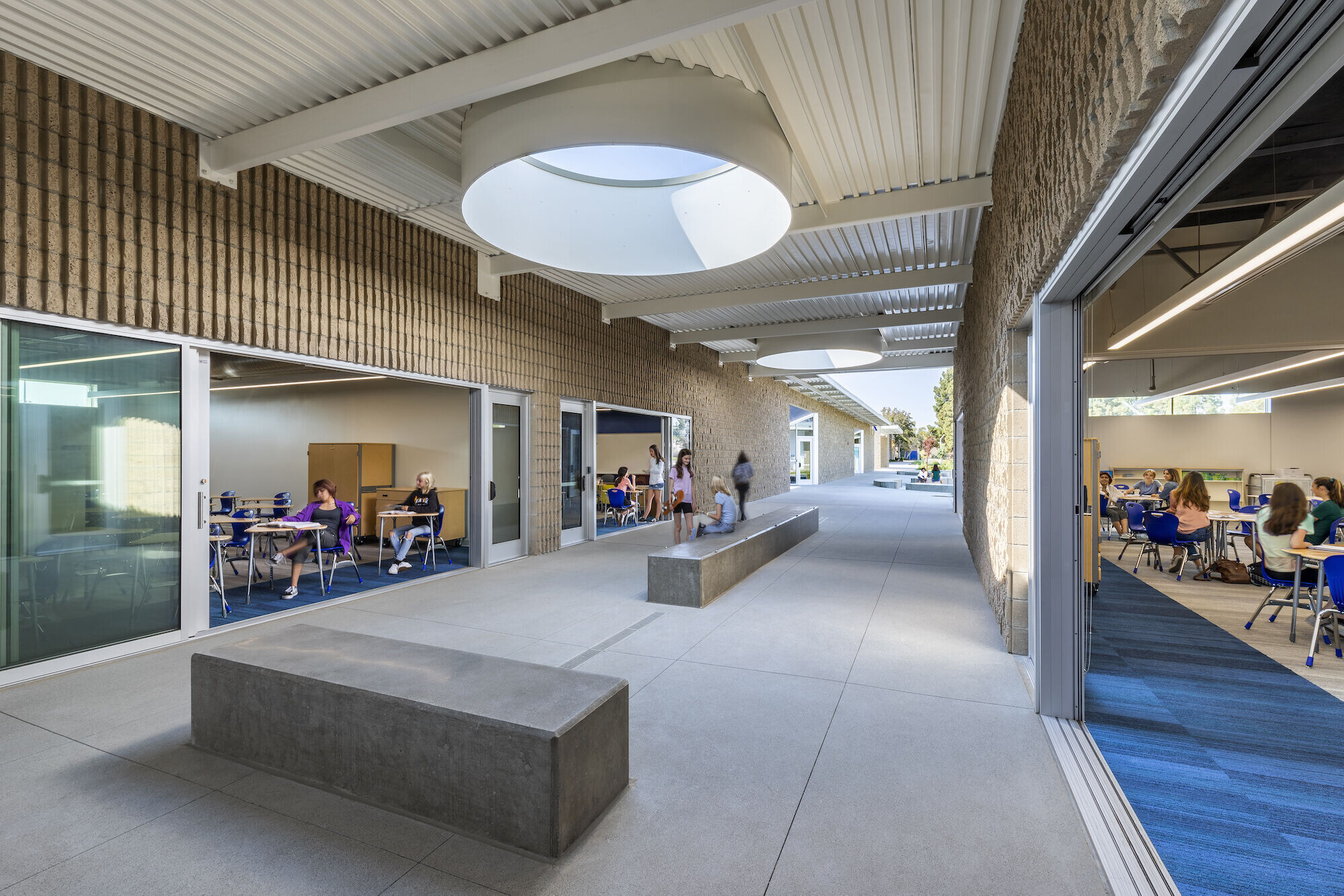
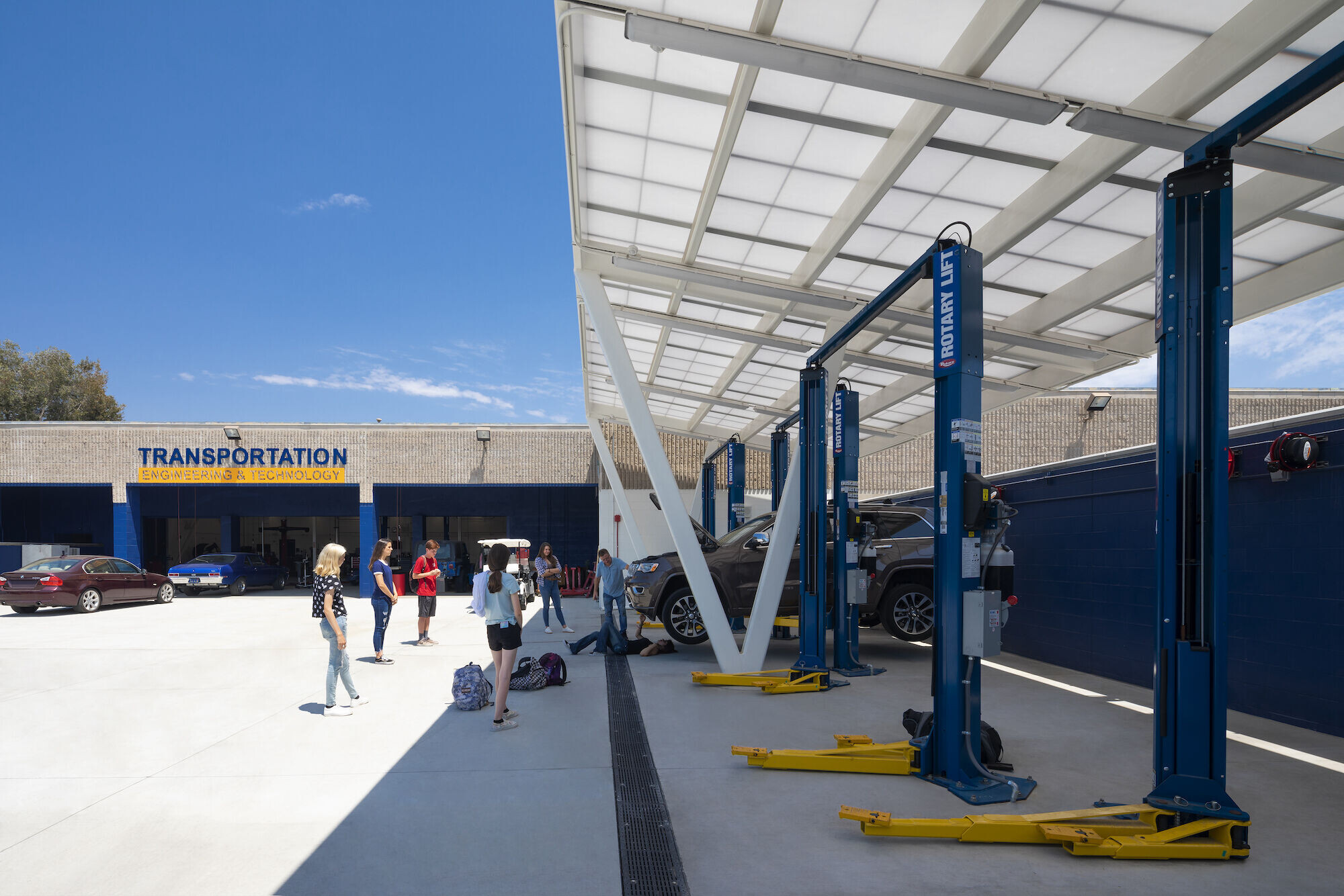
The ‘collaborative nucleus’ structure is aligned with other similar structures, enclosing a central landscape area where the ‘teaching clusters’ are located. This architectural model reinforces diversity in learning while promoting the physiological and psychological benefits of connectivity to nature.

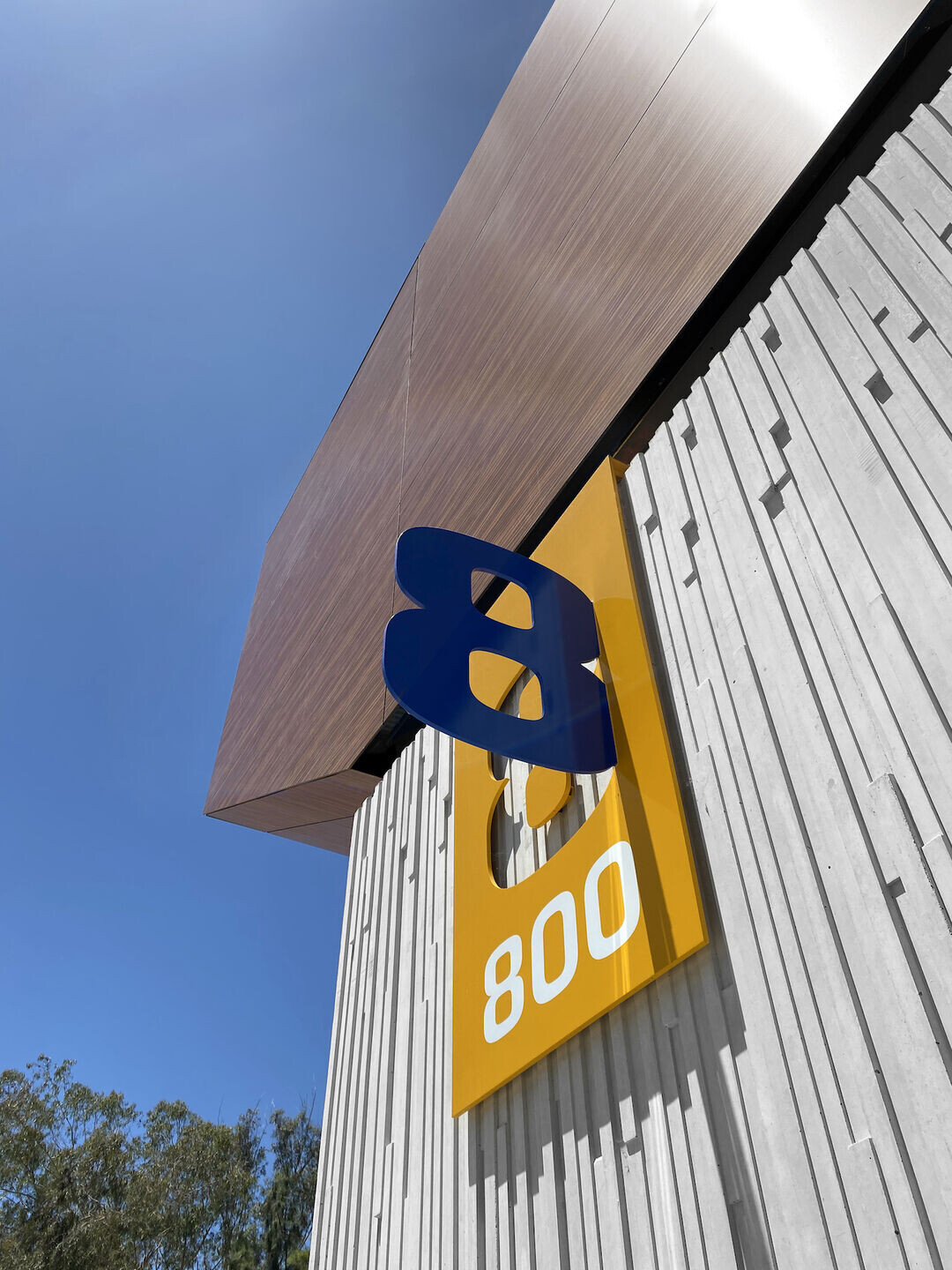
MUSIC BUILDING FOR MIRA MESA HIGH SCHOOL
Mira Mesa High School has one of the strongest music programs in California with 266 band members and 65 orchestra members. The band participates in multiple on-site and national events throughout the year, including Rose Parade and Carnegie Hall performances. Program success and expansion necessitated a new state-of-the-art facility. As part of campus-wide modernization, vision for the Music Building generated three distinct strategies guiding the design resolution:
1. Enhanced Volume and Acoustics for instrumental performance.
2. Campus Placement accommodating band access to the adjacent stadium, pedestrian connectivity to the campus core and tractor trailer access for equipment loading.
3. Elevate School Spirit with an iconic building exemplifying school identity and vitality of a premier music program


The design highlights two primary high-volume practice rooms, internally formed by angled walls and ceilings acoustically treated for sound deflection and absorption, and externally representative of musical performance. Additionally, strategic integration of natural daylighting enhances light quality without causing disruptive glare for musicians, and a ventilation strategy that includes ‘duct socks’ minimizing undesired sound while optimizing indoor air quality. The band and orchestral group performance rooms are linked by centralized low volume support spaces.


Critical functional requirements included:
1. Placement of instrument storage units distributed around main practice rooms to augment flow of many students and their instruments.
2. Multiple small rehearsal rooms varying from individual to quartet ensembles.
3. Centralized teacher visibility/surveillance throughout the building.
4. Entrances expressing welcome, student connectivity to the campus and band member egress to parade staging areas.

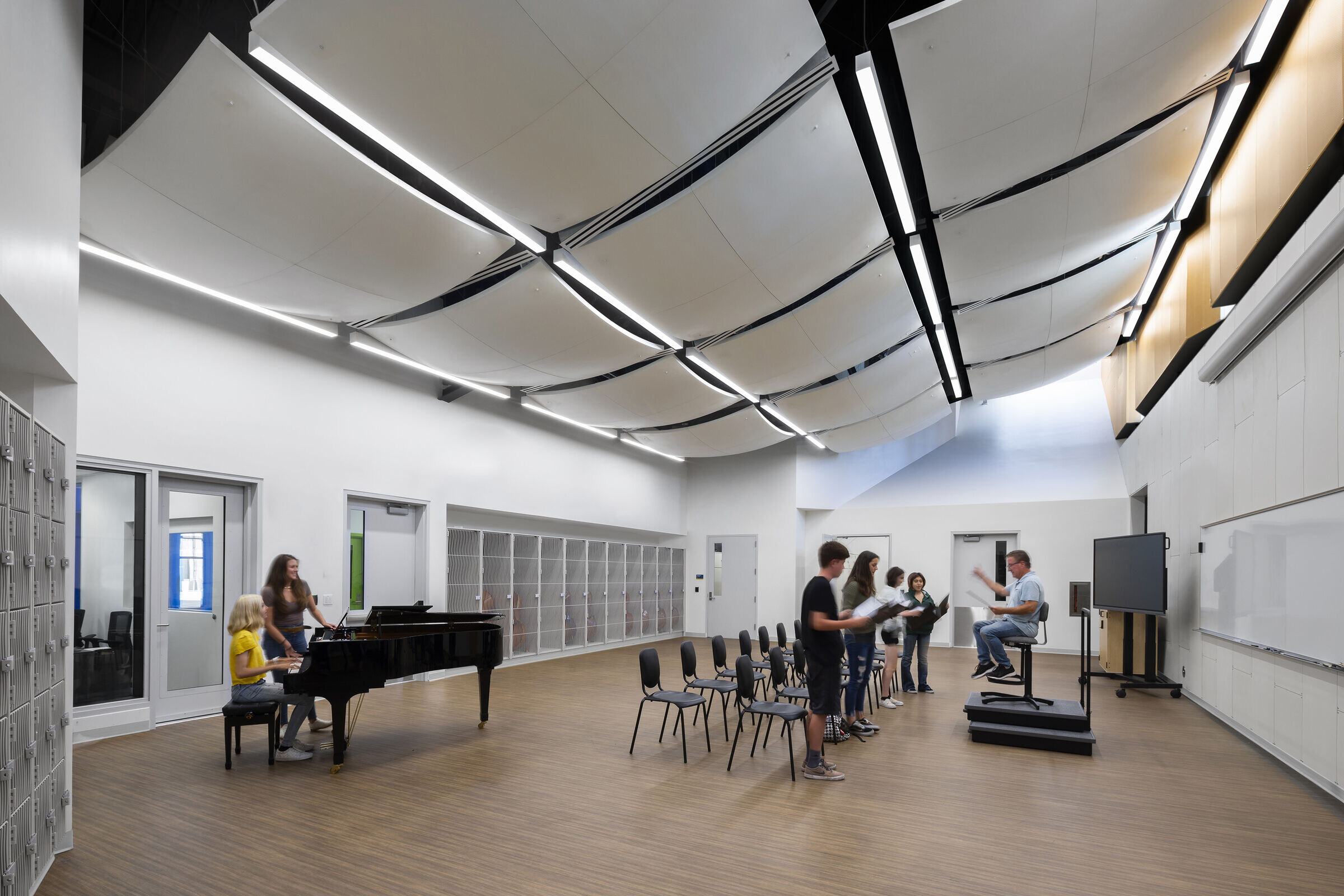
Team:
Design Architect & Architect of Record: Architects Mosher Drew
Contact: Ramiro Losada-Amor
Owner/Client: San Diego Unified School District, John Stokes (Project Coordinator)
General Contractor: Balfour Beatty, Grant Muscavitch
Structural: WSP, Craig Voss
Mechanical/Plumbing: Turpin & Rattan, Cesar Rodriguez
Electrical: Turpin & Rattan, Cesar Rodriguez
Landscape: KTU+A, Kurt Carlson
Civil: WSP, Michael MaGee
Graphic Designer: Visual Asylum, MaeLin Levine
Photographer: Costea Photography
